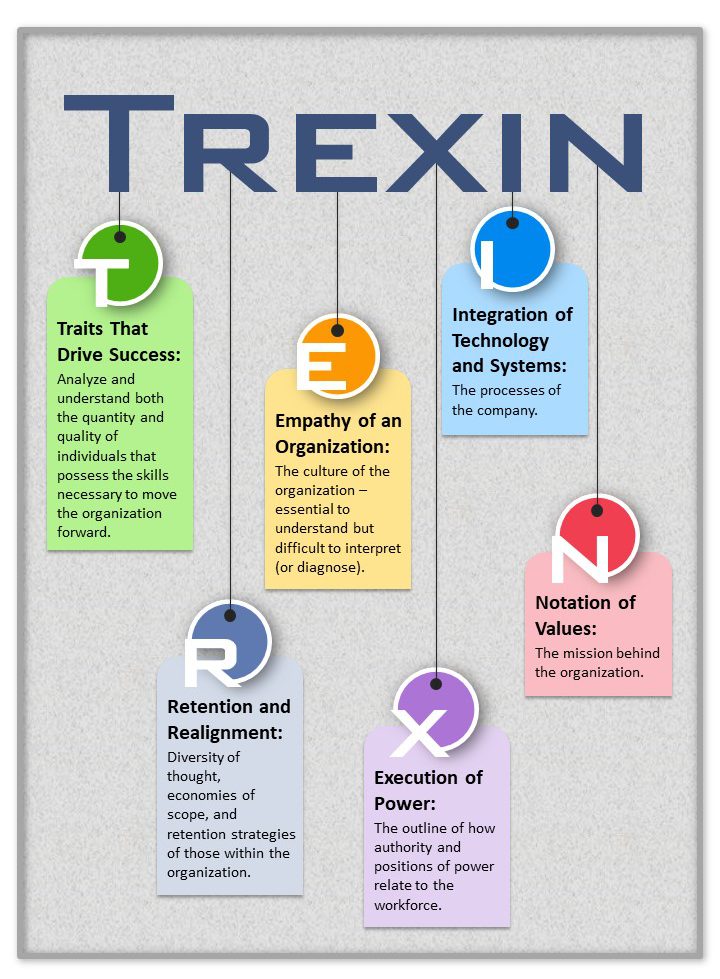Insight Paper April 3, 2019
Innovation Showcase
Position your team to enact and manage organizational development through frameworks of process investigation.
Change is a critical component of an organization’s ability to adapt and compete. As corporations continue to increase in size and workforce ecosystems are driven to complexity through technological adoptions and automation, operations and change consulting expertise will remain increasingly desirable. However, a team’s ability to correctly implement change or promote policy and advice that can extend boundaries of human capital potential and achieve cultural shifts are heavily reliant on their ability to implement the project off correctly from inception. If the change team pushes the wrong questions or dips into areas that are unrestricted, it can set off alarm bells within a company’s workforce and lower general morale. The goal of the following questions is to provide a guide (or framework) for change agents and project teams to create a foundational baseline from which you can gather the adequate and relevant information needed to properly and effectively execute or propose change.
I will use the first letters in our firm’s name to help you categorize and align responsibilities. These questions are meant to steer conversations with major stakeholders and supplement your team’s phase one to correlate the areas of importance where you will need to expend more effort to gather the accurate and critical information necessary.
Traits That Drive Success
- Does the organization have a standard prospective employee interview guide?
- Does your organization hire for the skills needed in the (perceived) future?
- How does your organization handle professional development training or technical training?
- What do you consider the core competencies of each of your job titles to be?
- Does your training department recognize these competencies and provide relevant training?
- How do you identify skill gaps? What do you do when you identify the skill gaps?
- What avenues are being utilized to recruit for the desired skills?
- How are you developing your managers?
- Are you investing money or resources in recruiting talent?
- How is analysis conducted on current industry skill development outside your organization, especially related to direct competitors?
- What are the strongest skills that your organization employs? What are the weakest?
- Do you use any pre-employment skill measurement tools?
- Are competencies identified in writing on job descriptions?
- Are there specific hard-to-fill roles/positions?

Retention and Realignment
This speaks to the people within the organization. It includes diversity of thought, economies of scope, and retention strategies. How are basic values shaped? Does the organization have development and career progression paths outlined? A company’s ability to retain and command an employee’s loyalty speaks not only to the brand but the self-fulfillment the workforce has reached.
- Are staff provided the right tools, training, and capacity to be successful?
- What is your average turnover rate?
- How many open positions do you typically have?
- Do you know how your organization’s staffing count compares to benchmark data?
- How many employees do you have?
- How many employees does your organization require to operate?
- What are your current vacancies?
- How many overtime hours do your staff typically work?
- What is the satisfaction level of your employees? Has this metric been measured before?
- What kind of vacation polices or time off initiatives has your company experimented with in the past? How successful were they?
- How will staffing decisions be influenced during slower work cycles or leaner times?
- Do your hiring cycles consider future states – do you ramp up only to lay off?
- What measurement criteria are employed to provide employees benchmarking for progress/promotion?
- Are there particular departments or positions that turn over at a higher rate than the organization’s average?
Empathy of an Organization
This is the culture of the organization – essential to understand but difficult to interpret (or diagnose). This includes informal conduct and fear of external advisory. How is work executed in this organization? One must understand the pervasive qualities that undermine or encourage in today’s ambitious economic system. Many articles and books have been written suggesting how best to lead a workforce – zero are considered the ultimate solution.
- How does leadership interact with staff?
- Are staff empowered to make decisions and act on them?
- Does your organization have succession planning in place? Is it publicly documented?
- Do you measure employee engagement?
- What is the leadership style of your CEO? Does the leadership style of the CEO reflect the culture of the organization as a whole and/or extend to the broader C-suite?
- What types of team/group structures exist within the organization? How are different facets of the company siloed in relation to their purpose?
- Is the culture a positive one (reinforcement) or negative one (autocratic)?
- How are you reinforcing your culture to new-hires or external relations publications?
Execution of Power
This is the outline of how authority and positions of power relate to the workforce. Today, power dynamics are continually experimented on as companies look to try different means of worker ownership, accountability, and flexibility within chains of command. This is one of the most promising fields of study where change agents and internal/external consultants bear the most influence.
- How does the organization run their governance function, if at all decision making?
- How do you track key performance measures?
- How would you describe your organizational structure?
- Which of your departments are centralized? Is it working?
- Which of your departments are de-centralized? Is this working?
- Do the employees have clear and relevant job descriptions that realistically fit their position?
- How are you encouraging collaboration between departments?
- Do you have a leadership/management “open door” policy?
- Do you have an internal communications department? What areas of scope do your internal communications workforce cover?
- What type of reporting hierarchy does the business have?
- How do departments function and coordinate with one another, especially within the technology and enterprise space?
- Are employee lateral moves between departments encouraged?
Integration of Technology and Systems
These are the processes of the company. Adjusting a system has a profound effect on an organization’s ability to adapt and innovate. This includes formal and informal examples. As organizations grow and age, their technology sometimes fails to keep up in addition to managing a historical backlog of who owns or works in the management of those technologies. An interconnected system, especially within larger companies, must be consistently and constantly mapped out to drive insight and provide a reference of material.
- What core business processes and tools does the organization possess?
- Does the organization follow any standard risk management framework?
- Are the systems consistent across departments?
- Are the systems well-known and convenient to follow for every relevant employee?
- Are the systems fluid or concrete? Does their purpose change frequently or remain steadfast?
- Do you need to invest in technology?
- What are the cost savings associated with investing in your systems?
- Do you invest in training?
- Do you provide job aids or resources to help your workforce navigate systems?
- What controls are there within the organization and how is the status fed back?
- Are all systems fully integrated? Which stand alone?
- Are there any regulatory requirements or external factors that impact the organization?
Notation of Values
This is the mission behind the organization. It is not purely relegated to business-driven methodology but social awareness, as well. Public pressure and a means of purpose are common themes in a 21st century workplace. People look to judge and understand the intrinsic value a company or organization has on the local economy and greater globe.
- Does your organization have a list of shared values that employees should align to?
- Do the employees at every level have the same internal culture or does this vary across department or job title?
- Are the values aligned with your strategic financial and growth plans?
- Is adherence to the organizational values rewarded or enforced?
- What role does your branding or marketing team play in exposing the company’s shared values to the greater community and job applicant pool?
- How is divergence from shared values handled? What are the major events in the organization’s history where this has occurred?
- Are there any quarterly events or annual celebrations that promote or brainstorm the inclusion or exclusion of a new ethos?

Only you will have the awareness and best judgment to employ some of the questions I have outlined. This should be viewed not only as a starting point for larger transformation efforts but as a backdrop for post-analysis case studies.While a company competes with rival entities, a non-profit competes for funding or public attention. This is the hallmark of change. Increasing workforce morale or employee satisfaction, while it may be purposed as altruistic, is only occurring because an uptick in employee retention and applicant capture potential destroys a competitor’s ability to recruit or poach your expert talent. When presenting your solutions, remember to package them in a digestible framework. Start with these questions and align your focus on the ones that are most plaguing the organization’s ability to compete. Once this void is clear, change agents become the vanguard for action.

